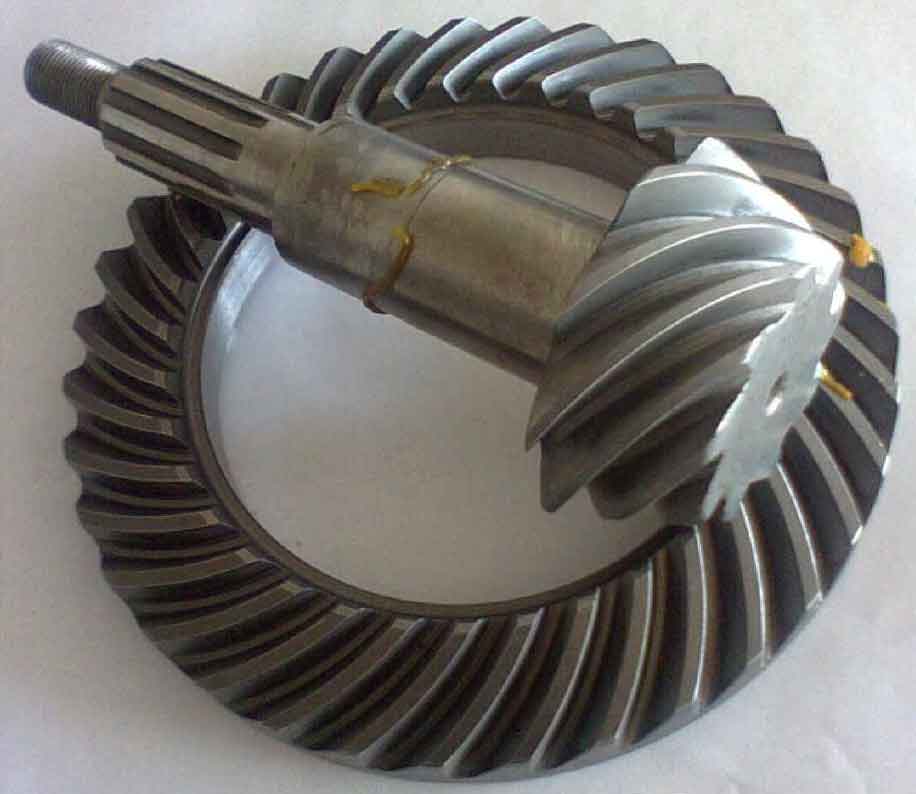Small module spiral bevel gear is widely used in fields requiring intersecting shaft transmission, such as electric tools, mechanical instruments, automobiles, household appliances, office equipment and so on. At this stage, the small wheel in spiral bevel gear transmission cannot be demoulded smoothly due to the small pitch cone angle. It cannot be mass produced by precision forging or injection molding. It needs to be machined and produced on 5-axis linkage machining center or special machine tool, which makes the production cost high and the manufacturing cycle long. For the processing of small module spiral bevel gear, at present, it is proposed that the small wheel is processed by double-sided milling method and the large wheel is formed by die method (Note: this die forming is only an approximate tooth shape, which is suitable for transmission types with low precision requirements). Only mass production of large wheel is realized, and the small wheel still needs machining production with high cost. As a new type of bevel gear, equidistant spiral bevel gear uses spherical involute as tooth profile and equidistant conical helix as tooth direction line. Its spiral tooth surface has the characteristics of normal equidistance. It can be separated from the die by rotating the die. It is suitable for MIM to realize the mass production of spiral bevel gear.
MIM process is a new near net forming technology for parts and components formed by the combination of plastic forming technology, polymer chemistry, powder metallurgy technology and metal materials. This forming technology can be applied to small parts with complex geometry, uniform structure, high precision and special requirements (0.2 ~ 200 g)
。 The uneven volume distribution of MIM will affect the volume distribution of parts during the demoulding process, which will lead to warpage due to the uneven volume distribution of MIM parts. In addition, when the feed flows into the mold, it will produce friction with the inner wall, so that the feed will produce a high shear rate gradient in the mold channel. The shear rate near the inner wall is the largest and the shear rate in the central area is the smallest, resulting in a low powder concentration near the inner wall and a high powder concentration in the central area of the channel. The distribution of powder concentration in the channel is uneven, and the uneven powder concentration will form a black line on the surface of the part. Therefore, it is essential to study the uniformity of volume shrinkage and powder concentration distribution to ensure that the molded parts meet the required dimensional accuracy and surface quality requirements.
Some scholars at home and abroad have studied the multi-objective parameter optimization of injection molding process. Zhao et al. Summarized the existing optimization methods. Tian et al. Used the non dominated sorting genetic algorithm (NSGA ⁃ II) to optimize the product quality and energy consumption. Zhang et al. Used Latin hypercube sampling, neural network and multi-objective particle swarm optimization algorithm to optimize the warpage, peak stress and clamping force indexes of molding process. However, few scholars have studied the multi-objective process parameter optimization of volume shrinkage distribution and powder concentration distribution of MIM parts.
Based on the above discussion, MIM process is innovatively applied to the processing of equidistant spiral bevel gear to realize the mass production of spiral bevel gear. Through demoulding test, it is verified that the equidistant spiral bevel gear small wheel can realize rotary demoulding. Due to the complex structure of isometric spiral bevel gear, it is difficult to meet the quality requirements by optimizing a single target. Therefore, based on BP neural network and NSGA ⁃ II algorithm, this paper optimizes the volume shrinkage distribution and powder concentration distribution of MIM isometric spiral bevel gear, and obtains the optimal process parameters to ensure its dimensional accuracy and surface quality requirements.

